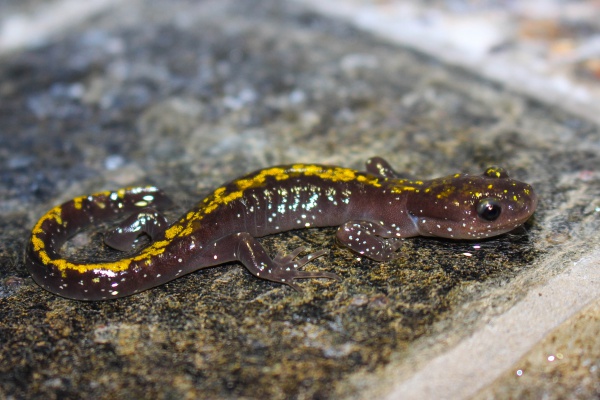Facts About Long-toed salamander
The long-toed salamander, a member of the mole salamander family (Ambystomatidae), is distinguished by its mottled skin and notably elongated fourth toe on its hind limbs. This intriguing creature is commonly found in the Pacific Northwest, thriving in various habitats such as temperate rainforests, coniferous forests, and alpine meadows. During winter, these salamanders hibernate, relying on their stored energy reserves to endure the colder months.
Taxonomically, the long-toed salamander is classified within the Ambystomatidae family and the Salamandroidea suborder. Its evolutionary history suggests that it originated from a common ancestor that migrated to the western Cordillera following significant geological changes.
In terms of appearance, these salamanders possess dusky black bodies adorned with tan, yellow, or olive-green stripes or spots running along their backs. Their eggs are encased in a gelatinous capsule, through which the developing embryos can be observed. As the larvae mature, they undergo metamorphosis, gradually developing limbs with distinctive pigmentation patterns.
The long-toed salamander is highly adaptable, inhabiting a wide range of environments and altitudes. Their breeding behaviors, including elaborate courtship rituals and egg-laying, are heavily influenced by seasonal changes and climate.
Conservation efforts are vital for the survival of the long-toed salamander, as they face numerous threats such as land development, invasive species, environmental pollutants, UV radiation, and habitat loss. These efforts aim to protect their habitats, maintain population diversity, and preserve the crucial ecological roles they play.
Although the IUCN lists the long-toed salamander as a species of least concern, certain subspecies, such as the Santa Cruz long-toed salamander, face more pressing conservation challenges. By studying the species' systematics and biogeography, conservationists can develop more effective strategies to protect and ensure the long-term survival of these unique amphibians.

 United States
United States